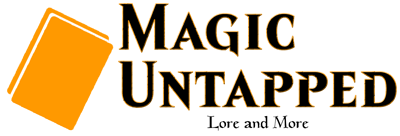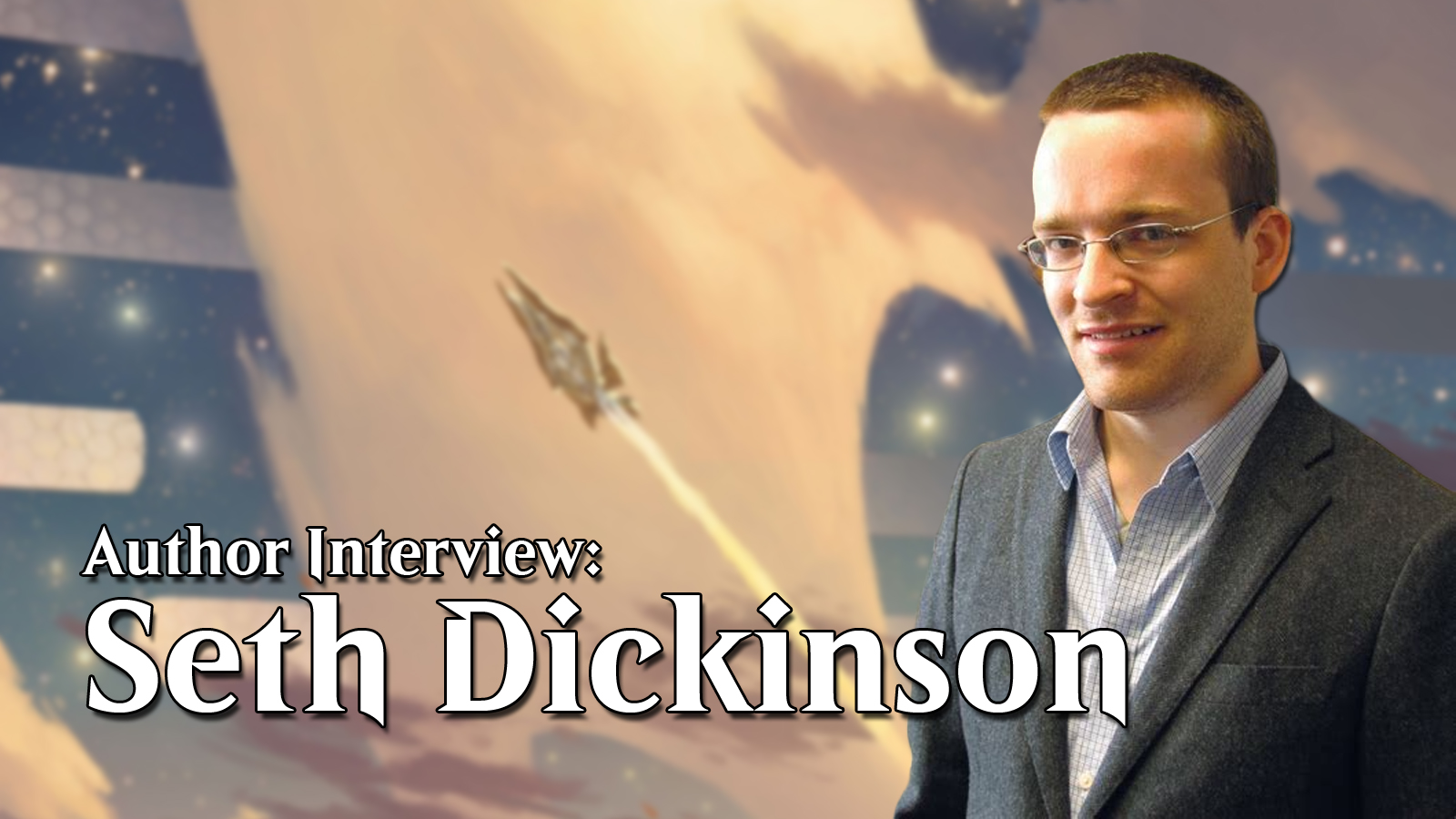Edge of Eternities brought forth a new, more unconventional edition to the Magic storyline - with Magic Untapped talking with author Seth Dickinson.
Since the early 2010's, Seth Dickinson has written both fantasy and Science Fiction stories for everything from books to video games. The debut of his first novel, The Traitor Baru Cormorant, in 2015, pretty much cemented him as a leading sci-fi author. And, in 2025, Dickinson expanded his storytelling to Magic, writing the storyline for Edge of Eternities. Magic Untapped sat down with him about his life, his writing, and EOE.
Magic Untapped: What were your main touchstones and influences for the story?
Seth Dickinson: Formally, I was influenced by weird webfiction like qntm's There Is No Antimemetics Division and the 9mother9horse9eyes9 Reddit...thing. My attention span is pretty shot these days, like, I think, most readers — I find it as tough to focus on writing as you do on reading! And when you're reading online there's a constant temptation to tab away, check on notifications, etc. I was trying to break the story up into short fragments that would be intriguing and addictive on their own (both to read and to write). Thus the constant format swaps, found documents, choose your own adventure hooks, etc.
I know this kind of fragmentation and density is sort of antithetical to the rhythms of a good old fashioned story. I need to be careful with it.
My intellectual touchstone was David Graeber's work on debt. When I was handed the outline for the story, Sami and Alpharael were looking for a big score to pay off their debt, and I remember thinking: "we have all this incredible difference, black holes and eternity columns, but money and debt and small time criminals are exactly the same?" I wanted to bring the same science fictional attention to the systems of money and crime as we do to the spaceships and mechans. Fortunately Miguel and the rest of the crew were incredibly receptive. Miguel's past work on Lancer was kind of an inspiration for me too.
Everyone in the story is wrestling with the question of what they owe: to the Sum, to the Next Eternity, to their cat, to their society...so that provided a really clear operating principle for me to generate drama. What do you believe you owe? And do you believe that debt is just?
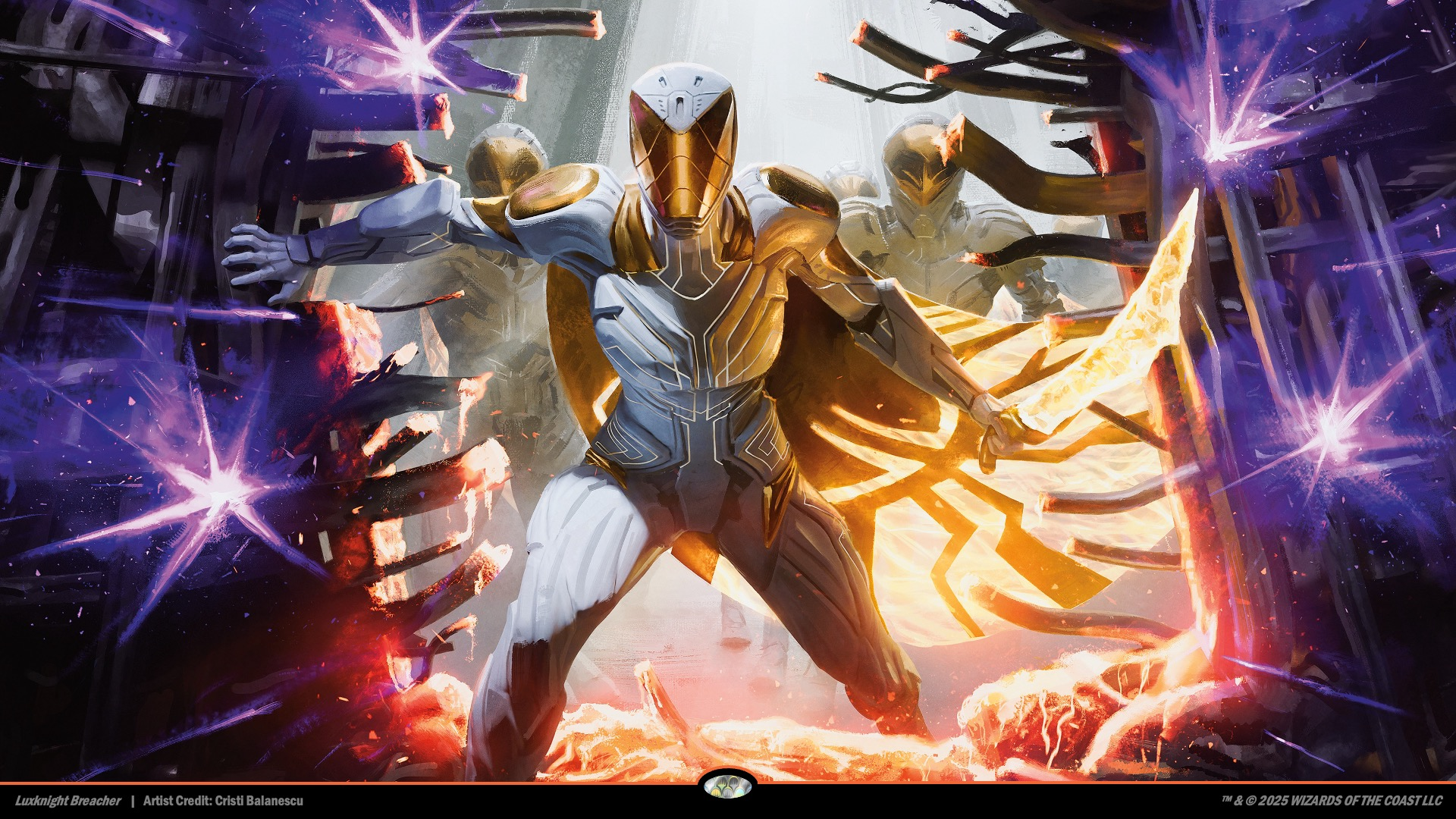
SD: No. I worked pretty hard to make all of them compelling, especially the ones who seem like they might be boring on paper (like a stodgy do-gooder Knight and his doctrinaire squire). I don't really have the kind of authorial relationships with characters that some writers do, where they speak to me in voices and tell me what to do. My characters feel hand animated to me, like I need to figure out every frame of what they do—because I'm constantly asking myself, "how does this character's action spring from what makes them unique?" It's a way to avoid shorthand and cliche but it's a lot of work. I just try my best to figure them out and make them interesting. I usually have to throw everything out and start over at some point because I realize I'm writing them all wrong.
SD: No, because I haven't kept up with the ongoing Magic storyline since I was in elementary school and the Weatherlight Saga appeared on lunchroom cards. Which made me feel bad, as there are some amazing writers who've worked on it (I've passed Allison Luhrs in the metaphorical hallway several times, as we've both done work for Bungie and Wizards). If the Edge was directly connected to that ongoing story I would've felt obliged to go back and read a bunch of it. I hate it when licensed fiction authors don't pick up each others' threads and characterization. I really value collaborative storytelling, plusing up the best parts of each others' work.
I did read a lot of the Battle for Zendikar story to get a sense for the eldrazi and the general tone of Magic fiction. And I tried (see next question) to read as much as I could of Tezzeret's past appearances.
SD: Tezzeret required the most work, because I felt like I needed to go back and read his past fiction to understand his drives and voice. He wasn't unpleasant to write at all, but I guess he required the most homework. I love Matt Stover's writing for Star Wars so it was fun to dig up his Magic work.
Sami also carries a lot of the story and I had to do some careful footwork to support a character so uncynical and genuine. You worry that readers will see a character like Sami as naive or unsophisticated, a sucker. I wanted Sami's love for Mirri to feel smart and defensible and savvy, in a way. We're all drowning in huge problems we can't solve alone. Sami chose one particular moral obligation to be absolutely the best at, a duty of care they know they can accomplish. I wish we all had that kind of clarity.
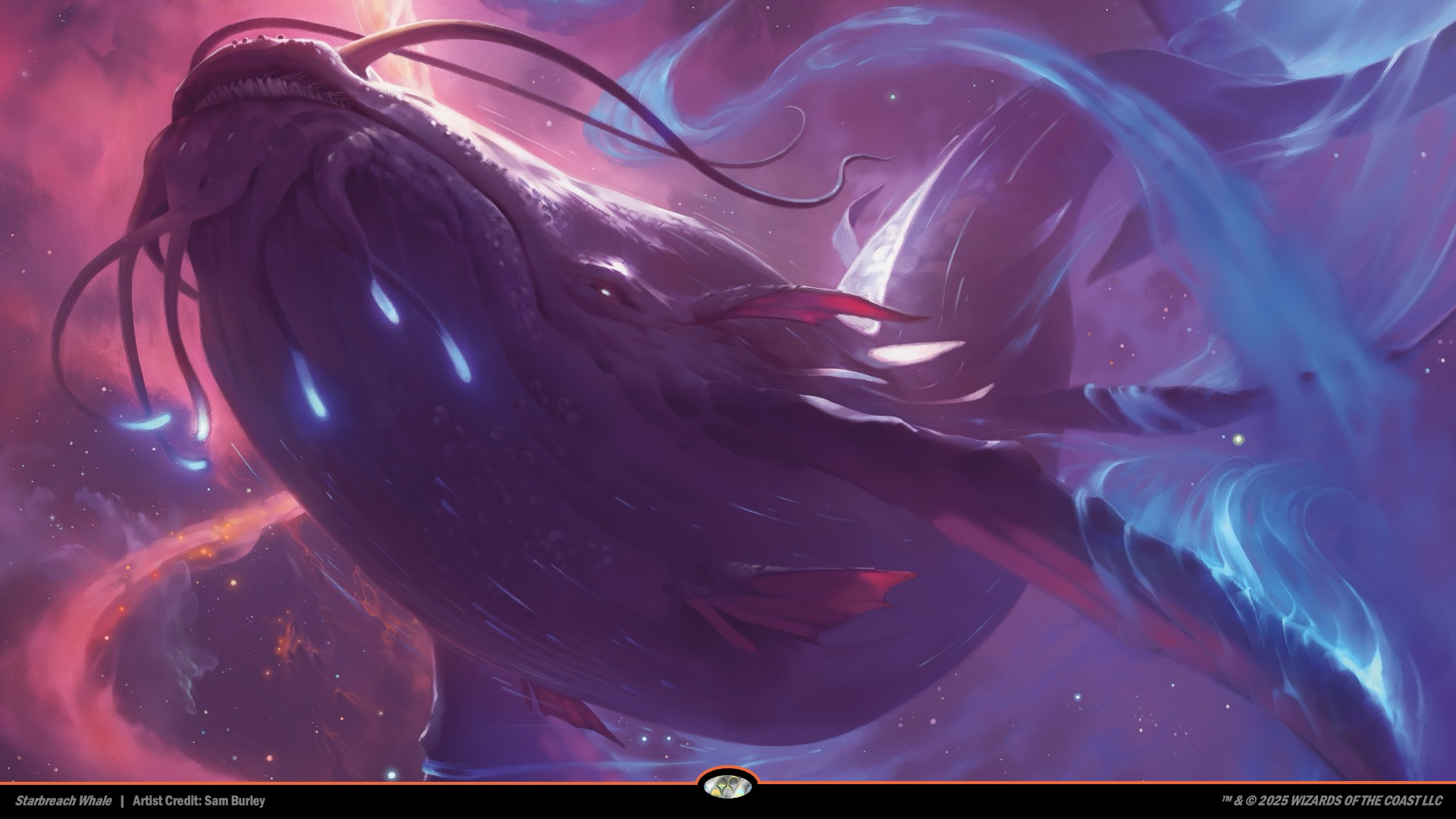
SD: I am sorry to give such a deeply boring answer but: this is how all stories begin. You find a character, you find the way the setting presses on that character (like a huge inverted pyramid of power and crisis with its point jammed in the top of the character's head) and then you say "What can I do to make this character's personal struggle rhyme with one of the great problems of the setting?"
So for Sami, the struggle is: how can I take care of myself and keep myself going when I've devoted myself to a selfless quest? For Tannuk it's: how can I make choices when all my choices will result in some kind of harm to someone? For Alpharael it's, why should I keep existing in this world when everything tells me the next world will be better? And for Haliya, what do I do when the choice I've been taught to make conflicts with the obvious needs of the people right in front me?
This is the same work you do introducing new characters at the start of any story. You want the reader to understand the engine that's driving a character, so they can spin up their own little mental model of how the character behaves.
SD: The role of mana. We had to figure out whether we could use entirely realistic physics and leave mana in the background, or do a sort of hybrid "real physics but mana takes the role of some normal stuff" (like stars being made of mana), or lean entirely into space fantasy. We decided pretty early, before I even came onboard, that it wouldn't be space fantasy. But there was still a lot of back and forth where I tried to bring in real physics and we had to have long email exchanges about whether it belonged in this setting.
I'm proud that we managed to get radiators on the spaceships, and namecheck the surprisingly awful radiation hazards of fusion engines. I don't think any of that is reflected on the card art, unfortunately. I actually paid an artist out of pocket to do some spaceship designs for the Edge featuring radiators and shadow shielding and other quirks of fusion-powered spacecraft, but Wizards already had its own internal concepts.
SD: Sure, in the sense that good storytelling for movie, TV shows and web fiction often uses the same techniques. I'm not a visual person, I have aphantasia, so I often try to describe scenes in a way I think people with a visual imagination will appreciate. I hope the battles at the Kav settlement and at Infinite Guideline lit up peoples' imaginations. Space warfare can be so much more interesting than the tired shorthand you see in Star Wars and most game cutscenes.
The downside of trying to do visual storytelling is that the imagination doesn't thrive on exact mimetic descriptions. Imagination likes evocative shorthand which it can then hydrate into thrilling vistas. If you try to manage every image in the reader's brain, "writing like a camera", you just end up with the narrative version of a dead butterfly pinned to a board.
SD: Yes. Early art for the characters and the setting bible was incredibly helpful. No qualifiers there, it really helped me.
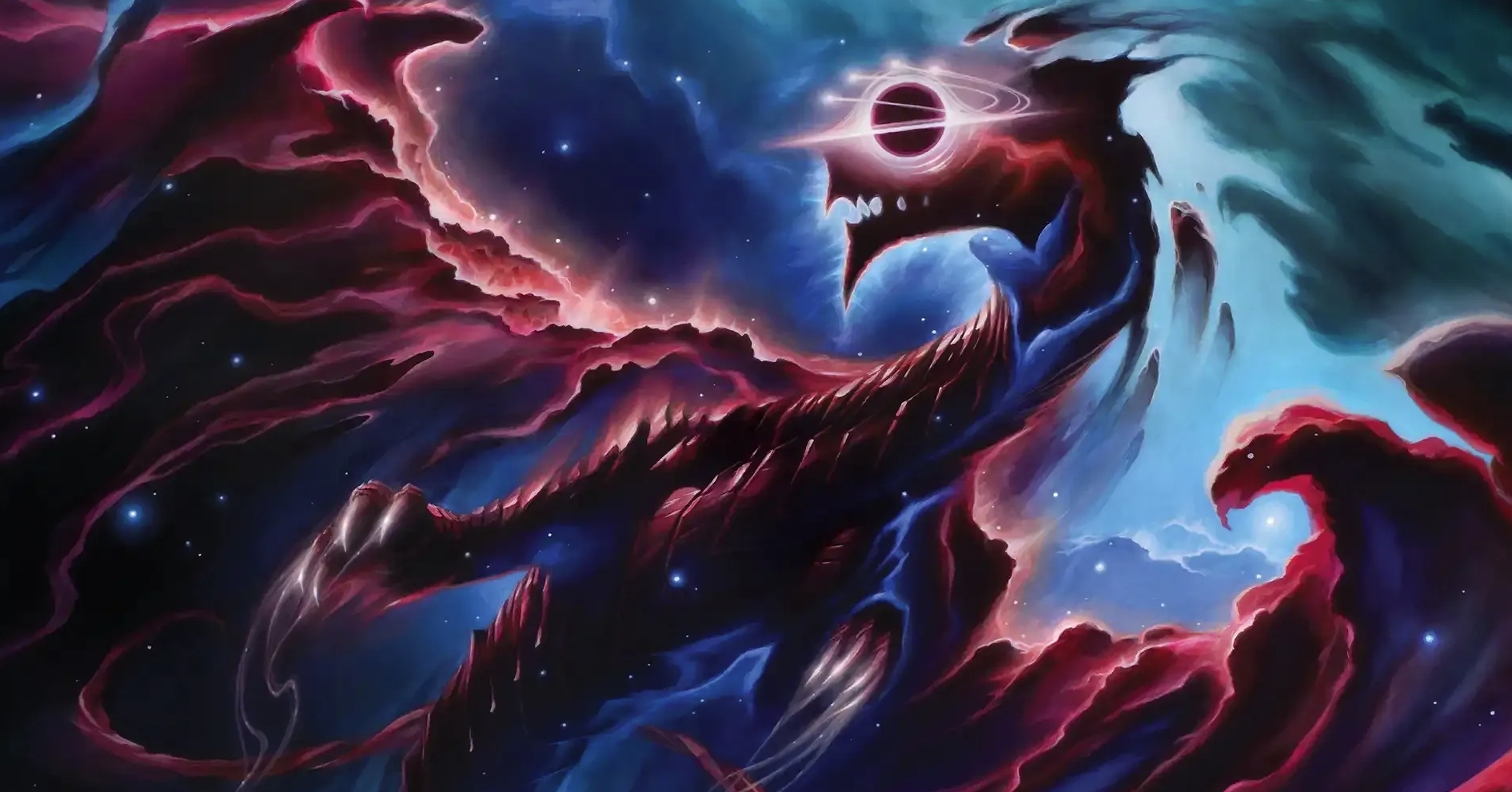
SD: Only in that his motives were always pretty mercenary, whereas the other characters were tied up in broader ideological conflicts or mysteries. In the original brief for the story Tezzeret wanted to move the Endstone like any other valuable product. He saw it as too much trouble to keep around and wanted to sell it. Eventually I landed on the angle that Tezzeret was using the Endstone as a probe to find the 'true powers' of the Edge so that he could be well informed about who might screw with him. That aligned his motives with the broader mysteries of the setting and integrated him better into the story.
SD: Absolutely. I feel like the Edge contains the possibility of real strangeness. Unlike a lot of science fiction settings, I don't think the Edge is tainted with the human assumption that we're at the center of everything — that our psychology and economy and society is the average jack of all trades setup and aliens are just weird exaggerated caricatures taking off from that default in different directions. It says something about the human imagination and its failings that everyone can instantly accept faster-than-light travel, but everyone seems to struggle with Pinnacle's gift economy. Whether you're a die-hard neoliberal capitalist or an anarchocommunist or anything else, you should be able to look at history and see that the way we live and organize our societies is constantly changing. Exporting the silent defaults of our historical moment to an alien starscape is a colossal failure of imagination and of intellectual integrity. It's not enough to make the technology different. Society and the way people participate in it must be different too. Take nothing for granted.
Other MU interviews of story authors can be found below:
